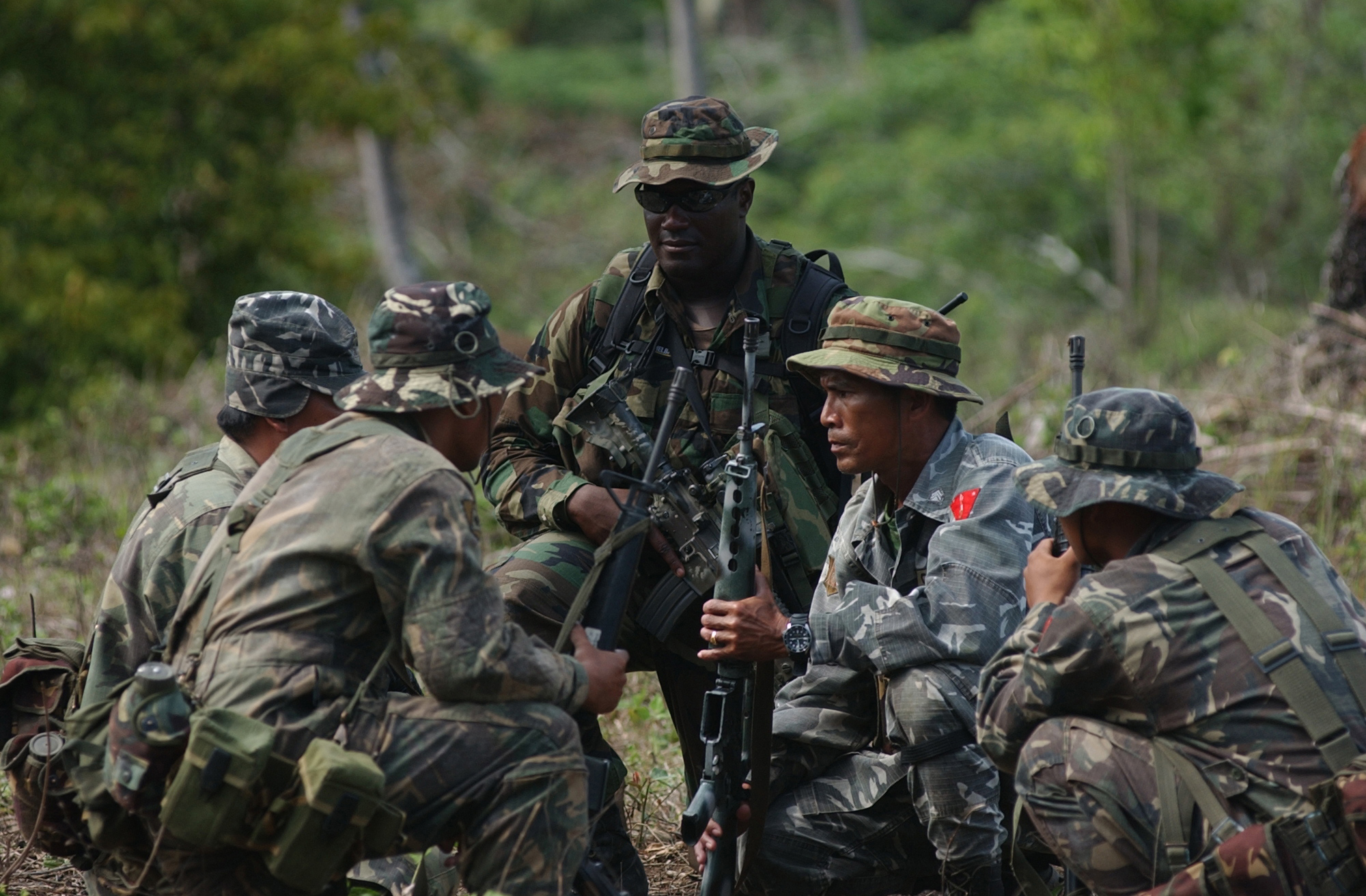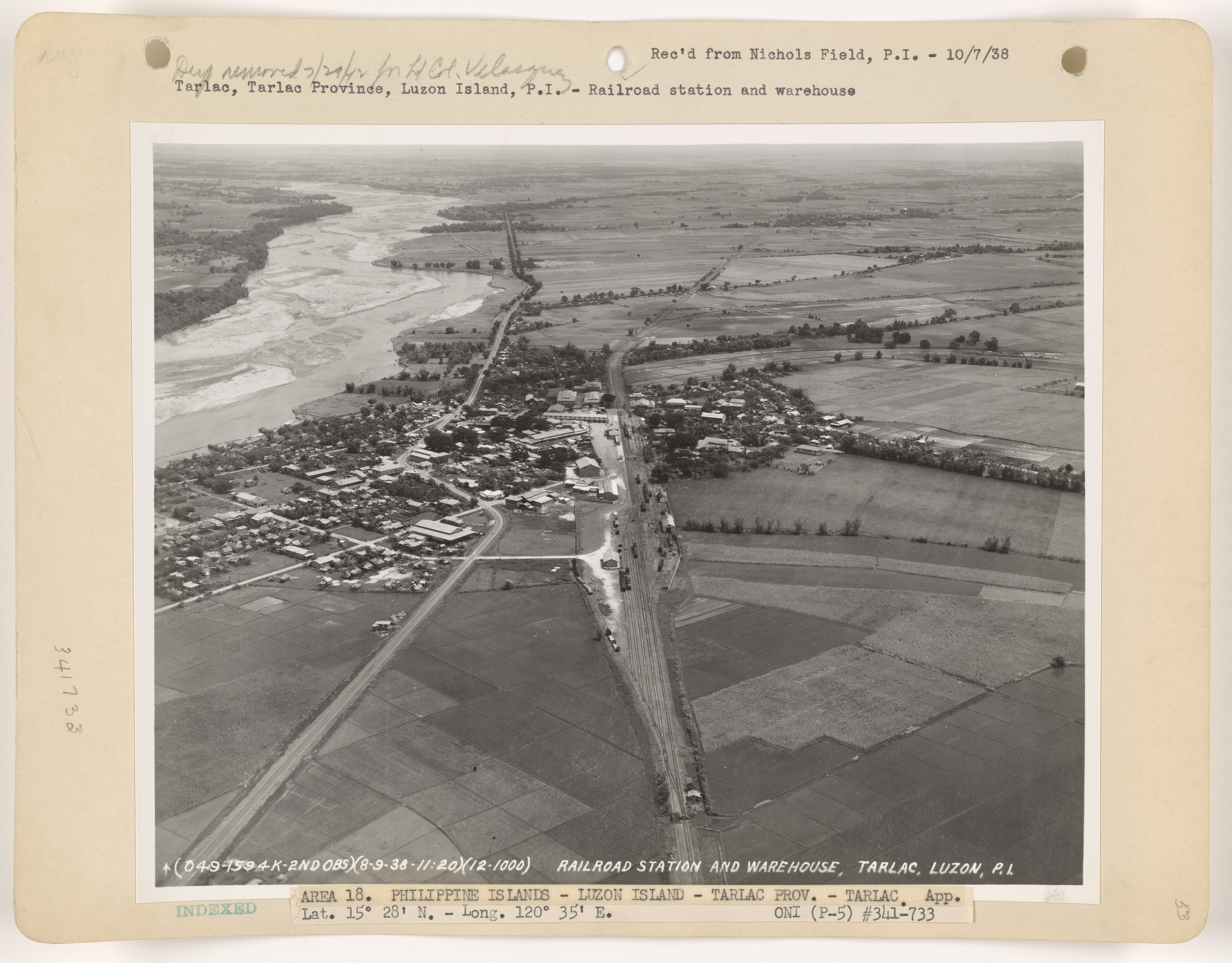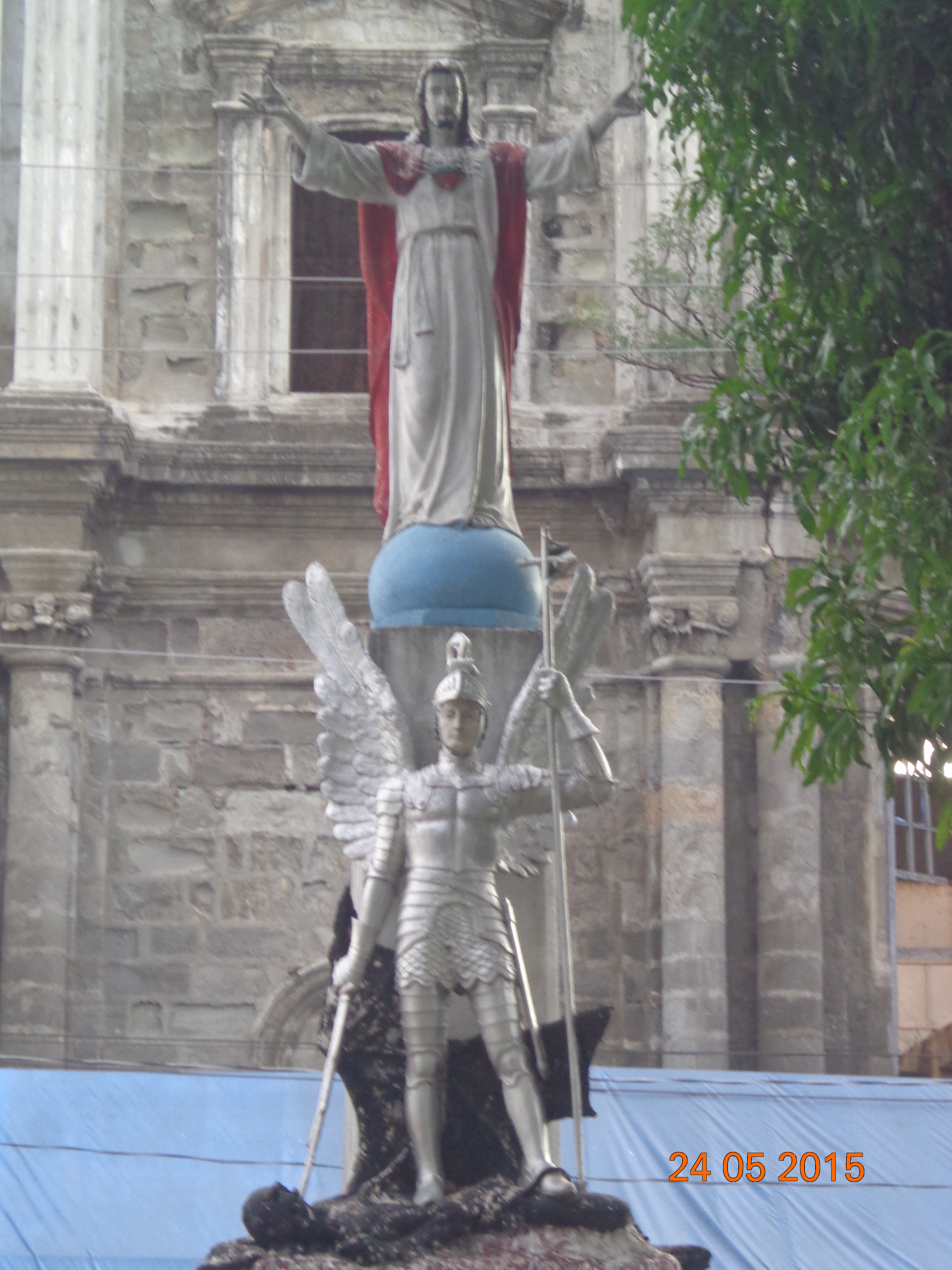|
Tarlac
Tarlac, officially the Province of Tarlac (; ; ; ; ), is a landlocked Provinces of the Philippines, province in the Philippines located in the Central Luzon Regions of the Philippines, region. It had a population of 1,503,456 people according to the 2020 census. Its capital is the city of Tarlac City, Tarlac, which is the most populous in the province. It is bounded on the north by the province of Pangasinan, Nueva Ecija on the east, Zambales on the west, and Pampanga in the south. The province comprises three congressional districts and is subdivided into 17 municipalities and one city, Tarlac City, which is the provincial capital. The province is situated in the heartland of Luzon, in what is known as the Central Plain also spanning the neighbouring provinces of Pampanga, Pangasinan, Nueva Ecija, and Zambales. Tarlac covers a total land area of . Early in history, what came to be known as Valenzuela Ranch today was once a thickly-forested area, peopled by roving tribes of noma ... [...More Info...] [...Related Items...] OR: [Wikipedia] [Google] [Baidu] |
Tarlac State University
Tarlac State University (TSU; ) is a public university located in Tarlac City, Philippines. Established in 1906, it is the flagship academic institution of higher education in the province offering different degree programs through its ten colleges and three campuses. TSU started as an elementary vocational school, trade school progressing to a secondary school. Later, it became a collegiate technical school and then a full-fledged state college, the Tarlac College of Technology. On October 13, 1989, it was converted into a state university by virtue of Republic Act No. 6764. Tarlac State University sits on a Level III-A status awarded by the Joint Committee of the Commission on Higher Education (Philippines), Commission on Higher Education (CHED) and the Department of Budget and Management (DBM) in recognition of its excellent instruction, active involvement in research programs and community-wide extension services. Most of its curricular programs are accredited by the Accred ... [...More Info...] [...Related Items...] OR: [Wikipedia] [Google] [Baidu] |
Tarlac City
Tarlac City, officially the City of Tarlac (; ; ; ), is a component city and capital of the Provinces of the Philippines, province of Tarlac, Philippines. According to the 2020 census, it has a population of 385,398 people, making it the most populous in the province. History Tarlac's first settlers came from Bacolor, Pampanga. They cleared the area, fertilised the soil, and then established their settlement here in 1788. Tarlac's name is a Hispanized derivation from a ''talahib'' weed called ''tarlak'', an Aeta term. The area around the current capital city was described as ''matarlak'' or ''malatarlak'', a word meaning "abundant with ''tarlak'' grass."Resources for Local Governance – Tarlac This small community of settlers experienced rapid population growth, as settlers ... [...More Info...] [...Related Items...] OR: [Wikipedia] [Google] [Baidu] |
Concepcion, Tarlac
Concepcion, officially the Municipality of Concepcion (; ), is a municipality of the Philippines, municipality in the Philippine Province, province of Tarlac, Philippines. According to the 2020 census, it has a population of 169,953 people. History In 1860, the towns of Concepcion and Magalang comprised a single town named San Bartolome (presently a barangay of Concepcion), which was a military ''Commandancia'' of Pampanga under the Spanish regime. A catastrophic flood devastated the whole settlement of San Bartolome in 1863 and its residents were left with no other choice but to abandon the place. Divided as to where they were to resettle, some went north and others went south. The first group, headed by Don Pablo Luciano, the Governadorcillo, organized a new settlement on the slopes of Mt. Arayat further south and named the settlement after him. Eventually, the place was renamed Magalang. The second group who took refuge in the north comprised the ''Santoses'', ''Laxamana ... [...More Info...] [...Related Items...] OR: [Wikipedia] [Google] [Baidu] |
Camiling, Tarlac
Camiling, officially the Municipality of Camiling, (; ; ), is a municipality in the Philippine province, province of Tarlac in the Philippines. According to the 2020 census, it has a population of 87,319 people. Camiling is one of the fastest-growing towns of Tarlac when it comes to income, economic activities, and cultural heritage. The town is also dubbed to be the "Old Lady in the Northwestern province of Tarlac", because it is one of the oldest municipalities created by the Spanish government under the province of Pangasinan where it previously included the former barrio of Mayantoc, San Clemente, and Santa Ignacia. The municipality also features cultural antiquity such as its churches, ancestral houses, and ruins. However, the baroque church of Camiling has yet to be restored after 20 years since a fire burned its interior. The inside of the church, one of the only two Spanish churches left in Tarlac, has become a cesspool for human waste, while the facade (front) and buttre ... [...More Info...] [...Related Items...] OR: [Wikipedia] [Google] [Baidu] |
Capas, Tarlac
Capas, officially the Municipality of Capas (; ), is a municipality in the province of Tarlac, Philippines, and one of the richest towns in the province. The town also consists of numerous subdivisions and exclusive villages. Capas is knon as the “Tourism Capital of Tarlac." Apart from being known as the final site of the infamous Bataan Death March, it is also known for Mount Pinatubo treks, where thousands of mountaineers and visitors go. The town has some industrial factories like the PilMiCo. History Originally a part of Zambales and Pampanga, its first settlers were the Kapampangan and the Aeta. It was founded in the year 1710 by the Augustinian Friars. During the American Colonial period, the Americans built the Camp O'Donell for military installation until when the Japanese used it as a concentration camp during the Bataan Death March as the last stop of the march. Capas as all other towns in Tarlac province was a part of vast wilderness inhabited by the Abellin ... [...More Info...] [...Related Items...] OR: [Wikipedia] [Google] [Baidu] |
Gerona, Tarlac
Gerona, officially the Municipality of Gerona (; , ), is a municipality in the province of Tarlac, Philippines. According to the 2020 census, it has a population of 94,485 people. Geography Gerona is one of the 17 towns of the province of Tarlac. It is bounded on the north by Paniqui; on the east by the Pura; on the south by the provincial capital Tarlac City; and on the west by Santa Ignacia. The town is from Tarlac City the provincial capital, from the regional center San Fernando, and north of Metro Manila. The MacArthur Highway goes through the center of the town. Gerona has a land area of of plain and rugged agricultural land representing 4.63% of the province total area. The Tarlac River, which originates from the eastern slopes of the Zambales Mountains, cuts across the west central areas, dividing the town into two parts. The eastern area consists of 31 barangays with total land area of representing 63.9% of the total area. It is characterized as plain, low-lying ... [...More Info...] [...Related Items...] OR: [Wikipedia] [Google] [Baidu] |
Anao, Tarlac
Anao, officially the Municipality of Anao (; ; ; ), is a municipality in the province of Tarlac, Philippines. According to the 2020 census, it has a population of 12,208 people, making it the least populated municipality in the province. Formerly a part of Pangasinan province, Anao was founded and organized into a municipality on March 16, 1870. Every year on March 16, the foundation of the town is celebrated along with the Ylang-Ylang Festival. History The area where Anao is located was inhabited before 1800 by people from the Ilocos Region. In 1835, a group of immigrants from Paoay, Ilocos Norte reached the region and first settled near a creek on the bank where there were balete trees. These immigrants called their settlement Balete. The immigrants found the region where they settled to have many agricultural prospects and this attracted more immigrants who came from the north, especially from the town of Paoay. The settlement expanded and later changed its name to "''Barrio ... [...More Info...] [...Related Items...] OR: [Wikipedia] [Google] [Baidu] |
La Paz, Tarlac
La Paz, officially the Municipality of La Paz (; , ), is a municipality of the Philippines, municipality in the Philippine Province, province of Tarlac, Philippines. According to the 2020 census, it has a population of 68,952 people. History The early history of La Paz needs to be clarified. Legends state that an old pueblo called "google:Cama+Juan&oq=Cama+Juan&aqs=chrome..69i57&sourceid=chrome&ie=UTF-8, Cama Juan" was situated along the bank of the Chico River, bordering the province of Tarlac and Nueva Ecija. When the Chico River (Philippines), Chico River overflowed during a storm, a great flood swept the entire pueblo during the night. The flood is said to have devastated the area, claiming many lives. This forced the inhabitants of "Cama Juan" to evacuate. The old site (Cama Juan) is known as "Balen Melakwan" or "Abandoned Town". The inhabitants chose a field of evergreen grass and shrubbery on which to rebuild, which they named "Matayumtayum". Towards the end of the nine ... [...More Info...] [...Related Items...] OR: [Wikipedia] [Google] [Baidu] |
Tarlac Cathedral
San Sebastian Cathedral Parish, commonly known as Tarlac Cathedral, is a post-war, Neo-Gothic Roman Catholic church located in Brgy. Mabini, Tarlac City, Philippines. The cathedral, which was dedicated to Saint Sebastian in 1686, is the seat of the Diocese of Tarlac. A historical marker of the National Historical Commission of the Philippines was unveiled near the cathedral's entrance on July 15, 2022. Parish history The town of Tarlac was said to have been established in 1686 by priests assigned to Magalang, Pampanga. The town was managed by the Augustinians from Pampanga until in 1725, a petition was brought to the attention of the Father Provincial to separate Tarlac from its distant matrix. In 1727, the separation was fulfilled with Tarlac being declared an independent parish. In 1757, however, the parish of Tarlac was annexed back to Magalang for quite some time. Architectural history The first known parochial building of Tarlac is attributed to Father Agustín Barri ... [...More Info...] [...Related Items...] OR: [Wikipedia] [Google] [Baidu] |
Bamban, Tarlac
Bamban, officially the Municipality of Bamban (; ), is a municipality of the Philippines, municipality in the Philippine Province, province of Tarlac, Philippines. According to the 2020 census, it has a population of 78,260 people. Etymology The municipality derives its name from the ''bamban'' plants ''(Donax canniformis)'' that once dominated large areas of land along the river near the foothills. It was initially called ''cabambanan'' or ''mabamban'', but was later called simply as ''bamban''. History The site of Bamban was originally a vast track of wild land extending eastward; and on the west side, composed of forested foothills and mountains lush with tall trees extending deep into the Zambales ranges. The thick forest and mountains were then inhabited by the Aetas (locally known as Baluga), and the Zambal, both of whom subsisted only on fishing and native or wild animals which abounded in the place. Occasionally, traders from Pampanga and the Tagalog provinces braved th ... [...More Info...] [...Related Items...] OR: [Wikipedia] [Google] [Baidu] |
Paniqui, Tarlac
Paniqui (), officially the Municipality of Paniqui (; ; ), is a municipality in the province of Tarlac, Philippines. According to the 2020 census, it has a population of 103,003 people. It is the birthplace of the 11th President of the Philippines, Corazon Aquino. Paniqui is a Hispanized term derived from the Ilocano word "''pampaniki''" which means " bat", since the town has caves that house bats. History The birth of Paniqui could be traced way back in 1712 when the provincial government of Pangasinan sent a group of men south of Bayambang, Pangasinan for the expansion of the Christian faith. The pioneering group was led by two brothers, Raymundo and Manuel Paragas of Dagupan and established the Local Government in a Sitio called "manggang marikit" (mango of an unmarried woman). Surprisingly, in this sitio, there is a great number of mammals called by Ilocanos "pampaniki" and it was from this term that the name Paniqui was derived. An uprising led by Caragay during the ... [...More Info...] [...Related Items...] OR: [Wikipedia] [Google] [Baidu] |
Mayantoc, Tarlac
Mayantoc, officially the Municipality of Mayantoc (; ; ), is a municipality in the province of Tarlac, Philippines. According to the 2020 census, it has a population of 32,597 people. The town got its name after a palm called 'yantoc' due to its abundance in the area. History The first settlers of Mayantoc before the coming of Christian migrants were the negritos of the Abiling tribe. As they arrived in great numbers, so the natives were soon forced to move deeper into the forest areas of the Zambales mountain range. The Christian settlers, mostly came from the Ilocos region, notably the towns of Cabugao, Tagudin, Sarrat, Paoay, Sinait and Bacarra settled in villages in the southern portion of the thriving town of Camiling, acknowledged as the mother town of Mayantoc. These villages later formed the barangay of Mayantoc under the township of Camiling. The place was still a forested area where rattan was abundant, a palm known by visitor traders as "Yantoc", so that in time the ... [...More Info...] [...Related Items...] OR: [Wikipedia] [Google] [Baidu] |






